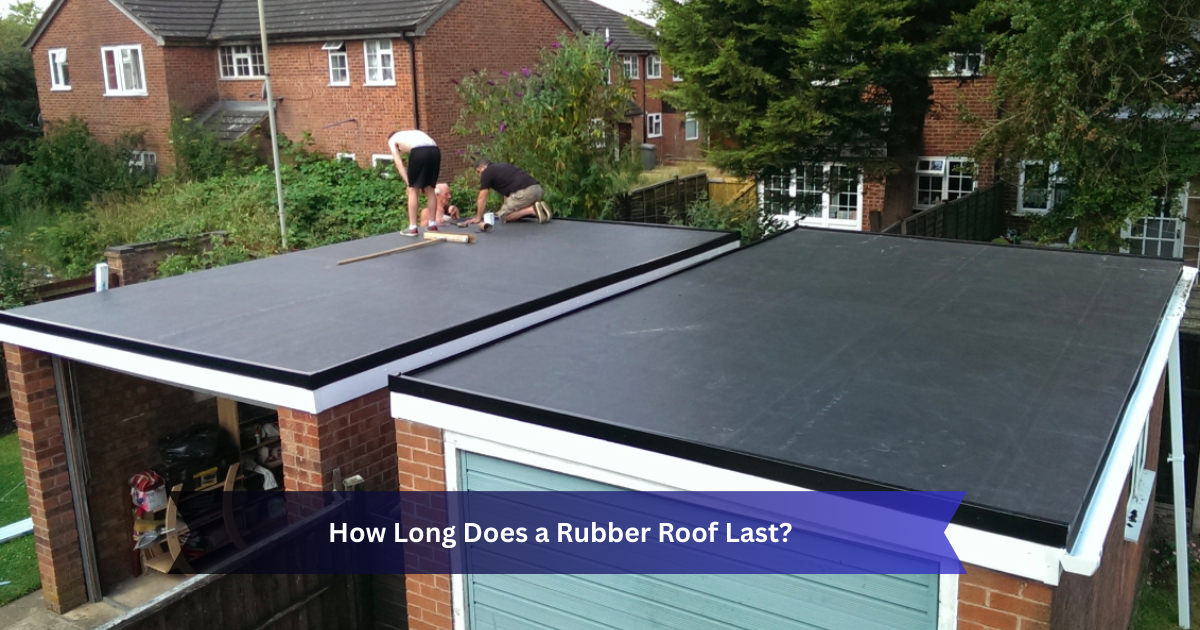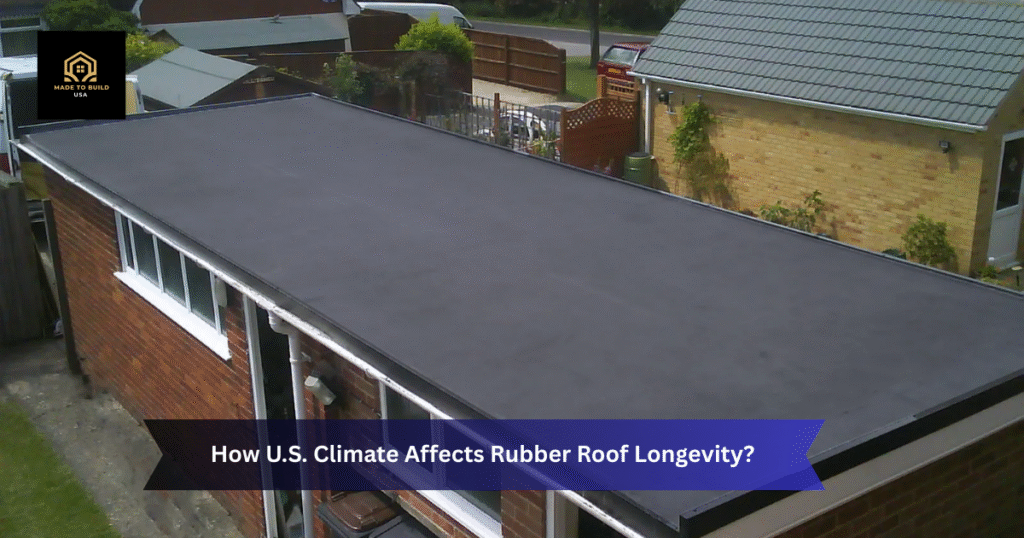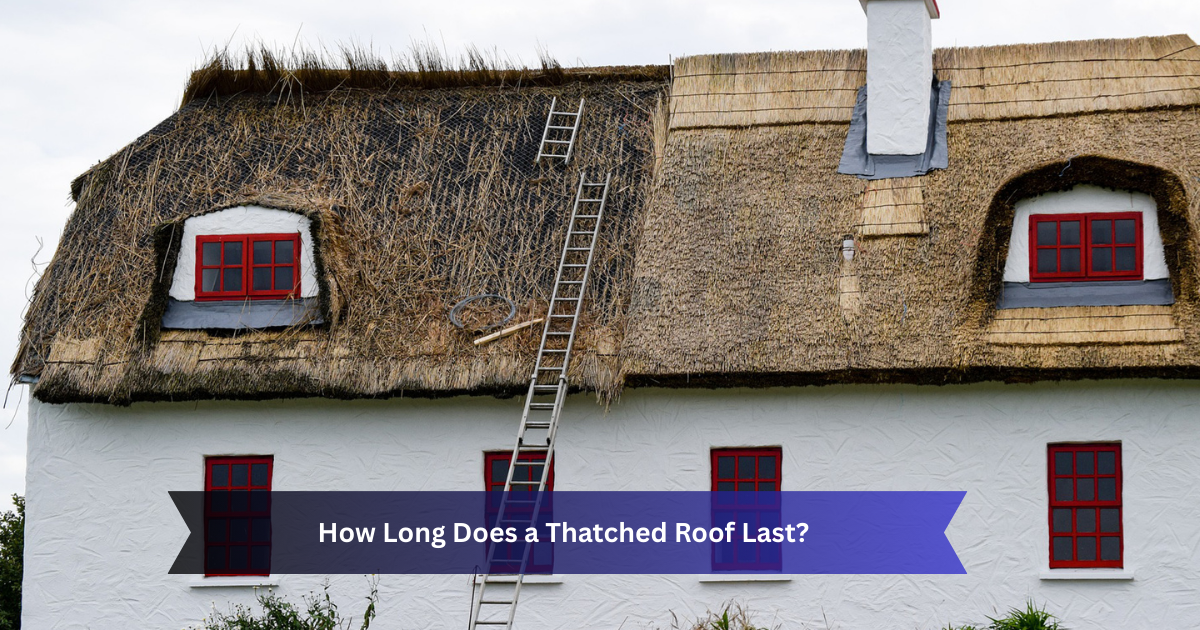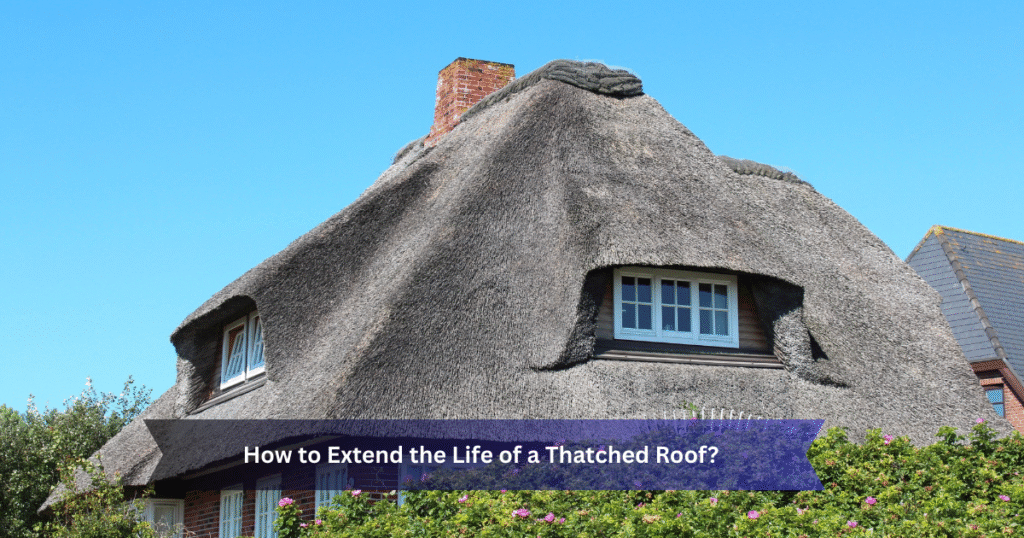
How Long Does a Rubber Roof Last?
Rubber roofing, also known as EPDM (Ethylene Propylene Diene Monomer), is one of the most common flat roof systems in the United States of America (USA). It’s widely used for commercial buildings, warehouses, and even some residential homes with low-slope roofs. But the question most property owners ask is: How long does a rubber roof last in U.S. climates?
The short answer is that: A properly installed rubber roof lasts 15–30 years on average, and in many U.S. regions it can reach up-to 40–50 years with coatings and maintenance.
Average Lifespan of Rubber Roofs in the U.S.
The life expectancy of EPDM rubber roofs depends on installation, roof thickness, and regional climate.
- Standard EPDM membrane (45 mils) → 15–20 years
- Thicker EPDM membranes (60–90 mils) → 25–30 years
- Well-maintained roofs with protective coatings → up to 50 years
This makes rubber roofing system is one of the most cost-efficient flat roofing options in the United States of America (USA).
How U.S. Climate Affects Rubber Roof Longevity?

Weather plays a huge role in roof durability, and conditions vary greatly across the U.S.:
- Northeast & Midwest (Snow & Freeze-Thaw Cycles):
Heavy snow and ice can stress seams and lead to ponding water. Regular inspections are crucial in states like Michigan, New York, and Illinois. - Southern States (High Heat & UV Exposure):
In Texas, Arizona, and Florida, constant sun can cause rubber shrinkage over the period of time. Thicker membranes and UV-protective coatings extend lifespan. - Coastal Areas (Salt & Storms):
Properties near the coasts, especially in the Southeast, face high winds, hurricanes, and salty air that can accelerate wear. - Mild Climates (Pacific Northwest, Northern California):
Rubber roofs often last the longest in regions with moderate rainfall and less extreme temperatures.
Referencing your roof’s performance by climate zone is recommended by the National Roofing Contractors Association (NRCA) when planning long-term maintenance.
Key Factors That Impact Lifespan
Aside from climate, several other factors determine how long a rubber roof will last in the U.S.:
- Installation Quality
Poor surface prep, thin application, or installation in bad weather reduces lifespan significantly. Always hire certified contractors. - Roof Thickness
U.S. installers commonly use 45-mil or 60-mil EPDM. Thicker membranes (75–90 mils) are more durable and ideal for high-traffic commercial roofs. - Maintenance Routine
Annual inspections, cleaning drains, and recoating every 10–15 years can double your roof’s service life. - Foot Traffic & Usage
Commercial buildings with frequent rooftop traffic (HVAC checks, technicians) may see faster wear than low-traffic residential properties.
Maintenance Tips for U.S. Rubber Roof Owners
To maximize durability, follow these U.S.-standard maintenance practices:
- Inspect annually or after storms (hail, heavy rain, snow).
- Clean using non-petroleum cleaning solutions (avoid damage to membranes).
- Remove debris, trim nearby trees, and keep drainage clear.
- Patch cracks early with EPDM-compatible sealants.
- Recoat using acrylic, silicone, or rubber coatings as recommended by U.S. roofing manufacturers.
Rubber Roof vs. Other Roofing Options in the U.S.
Here’s how rubber roofs compare to other common roofing systems across the country:
| Roofing Material | Average Lifespan | Cost (per sq. ft. installed, U.S.) | Maintenance |
| Rubber (EPDM) | 15–30 yrs (50 with care) | $4–$8 | Low |
| Asphalt Shingles | 15–25 yrs | $3–$7 | Medium |
| TPO Roofing | 20–30 yrs | $5–$10 | Medium |
| Metal Roofs | 40–70 yrs | $8–$14 | Low |
| Modified Bitumen | 15–20 yrs | $4–$8 | High |
Rubber roofs are especially attractive for flat-roof commercial buildings in U.S. cities where affordability and ease of recoating matter.
Warranties & Cost Considerations in the U.S.
Most U.S. EPDM manufacturers (like Firestone Building Products, Carlisle SynTec, and Johns Manville) provide 10–20 year warranties, but with proper maintenance, roofs often outlast them.
- Material costs in the U.S.: $1.50–$3.00 per sq. ft. (membrane only)
- Installed costs: $4–$8 per sq. ft., depending on state labor rates
- Recoating costs: Typically less than half of replacement
This balance of affordability and lifespan makes EPDM one of the top choices in American roofing.
Final Thoughts
So, how long does a rubber roof last in the U.S.? On average, 15–30 years, and up to 50 years with coatings and regular maintenance.
If you own property in the U.S., the best way to maximize your roof’s lifespan is to:
- Choose a qualified contractor certified by major U.S. manufacturers.
- Adjust maintenance for your regional climate.
- Recoat before significant wear appears.
When installed and maintained properly, a rubber roof is one of the most durable and cost-effective flat roof systems in America.
FAQs – Rubber Roof Lifespan in the U.S.
1. Can a rubber roof last 50 years in the U.S.?
Yes. With thicker membranes, coatings, and routine upkeep, rubber roofs in moderate climates (like Oregon or Northern California) can last up to 50 years.
2. How often should I inspect a rubber roof in the U.S.?
NRCA recommends at least once a year and after major storms or heavy snow.
3. Is rubber roofing popular for U.S. homes?
It’s more common for commercial buildings, but some U.S. homes with flat or low-slope roofs use EPDM for cost savings and durability.
4. What shortens lifespan the most in the U.S.?
Improper installation, poor drainage, UV exposure in southern states, and neglecting maintenance.

How Long Does a Thatched Roof Last?
A thatched roof is one of the most charming and traditional roofing styles, often seen on cottages, historic homes, and country-style properties. While they may look timeless, many homeowners and property managers wonder about one key thing—how long does a thatched roof actually last?
The answer depends on several factors, including the type of thatching material, climate, maintenance, and craftsmanship. In the United States, where thatched roofs are rare but valued for their rustic beauty, understanding their lifespan is crucial for long-term care and investment planning.
Average Lifespan of a Thatched Roof
Thatched roofs often survive 20 to 40 years before needing to be replaced entirely. However, certain sections—like the ridge—may need replacement sooner, typically every 10–15 years.
The actual lifespan depends on:
- Material used – Water reed lasts longer (up to 40 years) than long straw (15–25 years).
- Roof pitch – Steeper roofs shed water better, preventing rot and decay.
- Weather exposure – Strong winds, rain, or snow might reduce lifetime.
- Maintenance quality – Regular cleaning, repairs, and inspections greatly extend longevity.
Types of Thatching Materials and Their Lifespan
Choosing the right material plays the biggest role in how long your thatched roof lasts.
| Thatching Material | Average Lifespan | Key Features |
| Water Reed | 30–40 years | Highly durable, resists decay, ideal for wet climates |
| Long Straw | 15–25 years | Softer look, requires more frequent upkeep |
| Combed Wheat Reed | 25–35 years | Neat finish, durable with proper care |
| Sedge (for ridges) | 10–15 years | Used mainly for decorative and protective ridge layers |
Factors That Affect a Thatched Roof Lifespan
- Climate and Weather Conditions
- Constant rain or snow increases moisture retention, which can lead to fungal growth.
- In hot, dry climates, thatch may become brittle and wear out faster.
- Roof Pitch
- A 45-degree or steeper pitch is ideal to allow water to run off quickly.
- Flatter roofs hold water longer, speeding up deterioration.
- Craftsmanship
- Skilled thatchers create tighter, more even layers, which last longer and resist weather damage.
- Poor workmanship can cut the lifespan in half.
- Maintenance Schedule
- Small repairs and yearly inspections can greatly increase the roof’s lifespan.
How to Extend the Life of a Thatched Roof

Use these upkeep suggestions to extend the lifespan of your thatched roof:
- Annual Inspections – Catch problems early before they cause serious damage.
- Ridge Replacement – To preserve the primary thatch, replace the ridge every ten to fifteen years.
- Remove Moss and Algae – These hold moisture and speed up decay.
- Repair Bird or Rodent Damage – Animals can pull out thatch for nesting.
- Ensure Good Ventilation – Proper airflow helps dry the roof after rain.
Signs Your Thatched Roof Needs Repair or Replacement
- Thatch is thinning or uneven.
- You notice leaks inside the property.
- The ridge is visibly worn or sagging.
- The roof appears discolored, with heavy moss growth.
Cost Considerations for Thatched Roofs in the USA
In the United States, installing a new thatched roof can cost $20,000–$40,000, depending on size and materials. Maintenance costs are lower but should be budgeted annually.
While this may seem expensive compared to asphalt shingles, many homeowners invest in thatching for its unique beauty, natural insulation, and historic value.
Thatched Roof Lifespan in the USA vs. UK and Other Countries
In the UK and Europe, where thatched roofing is more common and materials are locally sourced, lifespans tend to be on the higher end. In the USA, where climate varies greatly and materials may be imported, lifespan may be slightly shorter unless maintenance is top-notch.
Final Thoughts
A thatched roof can last 20–40 years with proper materials, installation, and care. While it requires more maintenance than modern roofing, its beauty, character, and historical charm make it worth the effort for many property owners.
If you’re in the USA and considering thatching, find a skilled thatcher familiar with your local climate, invest in quality materials, and commit to regular upkeep. That way, you’ll enjoy decades of timeless style and reliable shelter.
Also read our latest blog post: